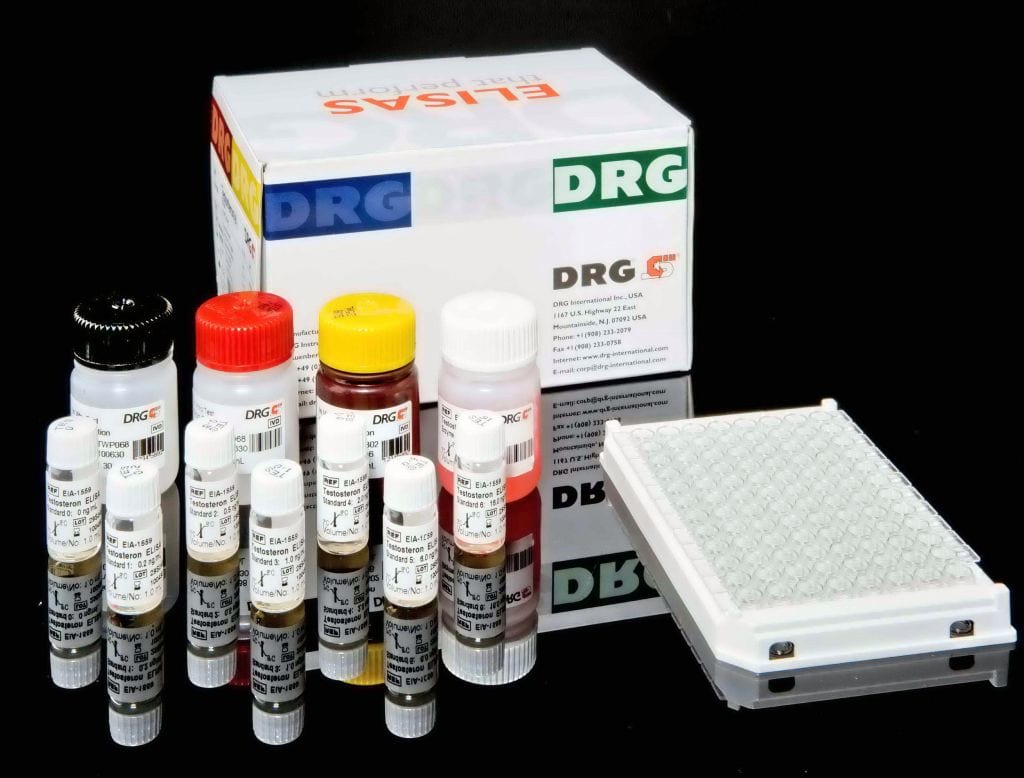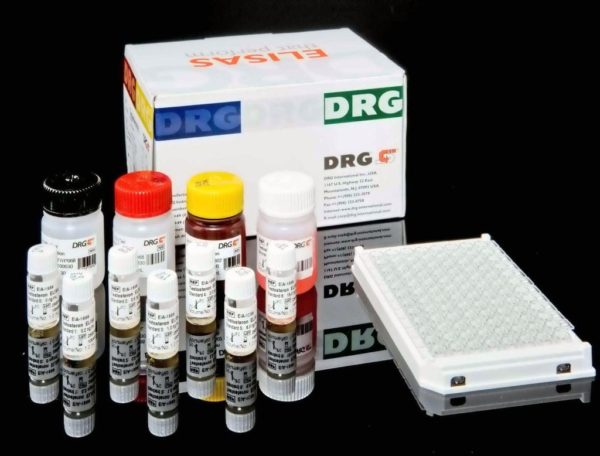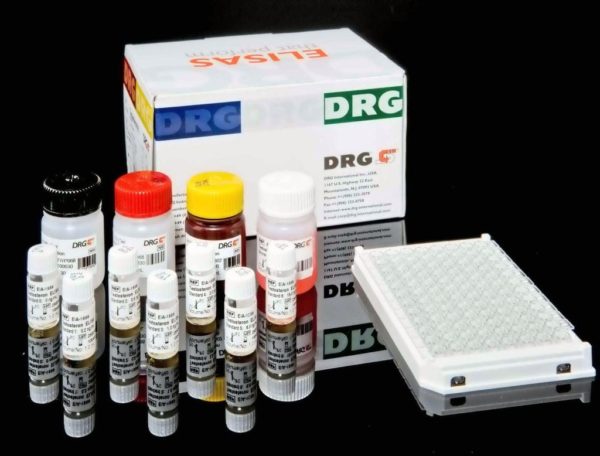Description
An enzyme immunoassay for the quantitative determination of immunoglobulin E (IgE) concentration in serum.
Patients with atopic allergic diseases such as atopic asthma, atopic dermatitis, and hay fever have been shown to exhibit increased total Immunoglobulin E (IgE) levels in blood.1,2,3IgE is also known as the reaginic antibody. In general, elevated levels of IgE indicate an increased probability of an IgE-mediated hypersensitivity, responsible for allergic reactions. Parasitic infestations such as hookworm, and certain clinical disorders including aspergillosis, have also been demonstrated to cause high levels of IgE.4,5 Decreased levels of IgE
are found in cases of hypogammaglobulinemia, autoimmune diseases, ulcerative colitis, hepatitis, cancer, and malaria.6 Cord blood or serum IgE levels may have prognostic value in assessing the risk of future allergic conditions in children.7,8 Certain groups of white blood cells, including basophils and tissue mast cells, have membrane receptors for the IgE molecule. These target cells, through a series of complex reactions, form a combination of a specific allergen with antibody-sensitized basophils or mast cells, and initiate the release of certain vasoactive agents, such as histamine, into the blood stream.9,10,11 As a result, there is a constriction of smooth muscles, dilation of small blood vessels, activation of
blood platelets, and irritation of skin nerve endings characteristic of allergic reactions. Typical clinical symptoms of immediate hypersensitivity are inflammation and itching in a skin reaction, or congestion in a bronchial reaction. The IgE serum concentration in a patient is dependent on both the extent of the allergic reaction and the number of different allergens to which the patient is sensitized. Non-allergic normal individuals have IgE concentrations that vary widely and increase steadily during childhood, reaching their highest levels at age 15 to 20, and thereafter remaining constant until about age 60, when they slowly decline.12
The DRG IgE Quantitative Test is a solid phase enzymeÂlinked immunosorbent assay (ELISA) based on the sandwich principle.13,14 The test specimen (serum) is added to the
IgE monoclonal antibodies immobilized on polystyrene microtiter wells (solid phase) and incubated with the Zero Buffer. If human IgE is present in the specimen, it will combine with the antibodies on the well. The well is then washed to remove any residual test specimen, and goat anti-IgE in the antibody-enzyme (horseradish peroxidase) conjugate reagent is added. The conjugate reagent will bind immunologically to the IgE on the well, resulting in the IgE molecules being sandwiched between the solid phase and the enzyme-linked antibodies. After incubation at room temperature, the solid phase is washed with water to remove unbound labeled antibody. A solution of 3,3Õ,5,5Õ-Tetramethylbenzidine (TMB) is added and incubated for 20 minutes, resulting in the development of a blue color. The color development is stopped and the resulting yellow color is measured spectrophotometrically at 450nm. The concentration of IgE is directly proportional to the color intensity of the test sample.The DRG IgE ELISA provides a rapid, sensitive, and reliable assay for total serum IgE. Two carefully selected IgE antibodies are used to determine a minimal concentration of IgE of 5.0 IU/mL.




